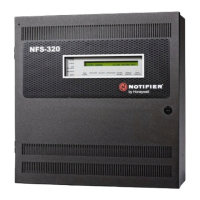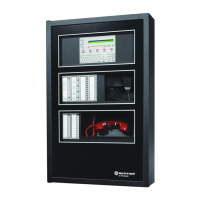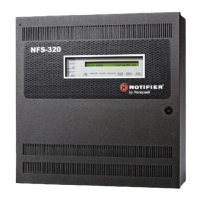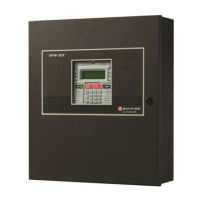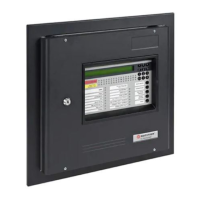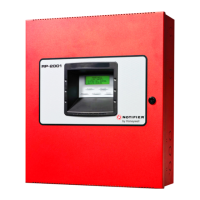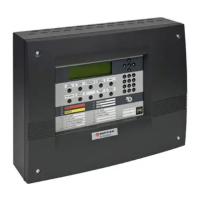NFS2-3030 Programming Manual — P/N 52545:A 11/29/2005 121
Equations CBE: Zones and Equations
Example: OR(Z02,Z05,L2D12)
If any one of the three arguments in the equation is active the logic zone will be activated.
• The “NOT” Operator
Inverts the state of the argument (activated to deactivated OR deactivated to activated).
Example: NOT(Z02)
The logic zone will remain activated until the argument activates.
If the argument activates the logic zone will deactivate.
• The “ONLY1” Operator
Requires that only one argument be active.
Example: ONLY1(Z02,Z05,Z09)
If only one of the arguments activates the logic zone will be activated.
• The “ANYX” Operator
Requires that the amount of arguments specified by the number preceding the arguments be
active.
Example: ANYX(2,Z02,Z05,Z09)
If any two or more of the arguments are in alarm the output point will be activated.
The X amount may be a value from 1 through 9.
• The “XZONE” Operator
Requires that any combination of two or more input devices programmed to a zone be active.
Example: XZONE(Z02)
If any combination of two or more initiating devices that have been mapped to this software
zone come into alarm, then outputs mapped to this zone will activate.
• The “RANGE” Operator
Each argument within the range must conform to the requirements of the governing function.
The range limit is 20 consecutive arguments.
Example: AND(RANGE(Z1,Z20))
Zone 1 through Zone 20 must all be active to activate the logic zone.
Time-based Functions
The panel supports three time-based functions: DEL, SDEL, and TIM. Special rules apply to an
equation containing a time-based function:
• Only one time-based function may be used in an equation.
• The time-based function must appear only once, as the first entry of the equation.
• It may not be nested within parentheses in the equation.
• Logic functions may be used in an equation that begins with a DEL or SDEL time-based
function: however, they must appear within parentheses following the time-based function.
Delay and duration times are in 24-hour format (HHMMSS); the allowable range is 00:00:00 to
23:59:59.
The “DEL” Function
Used for delayed operation.
Example: DEL(HH.MM.SS, HH.MM.SS,AND(L1M1,L1M140))
• The first HH.MM.SS is the delay time, the second HH.MM.SS is the duration time. If the
argument - AND(L1M1,L1M140) - in the example above activates, the function becomes
true after the argument has been active for the delay time, and continues to be true for the
duration time as long as the argument stays active. If the argument goes inactive during the
delay time or the duration time, the function reverts to false and the timing would begin all
over again if reactivated.

